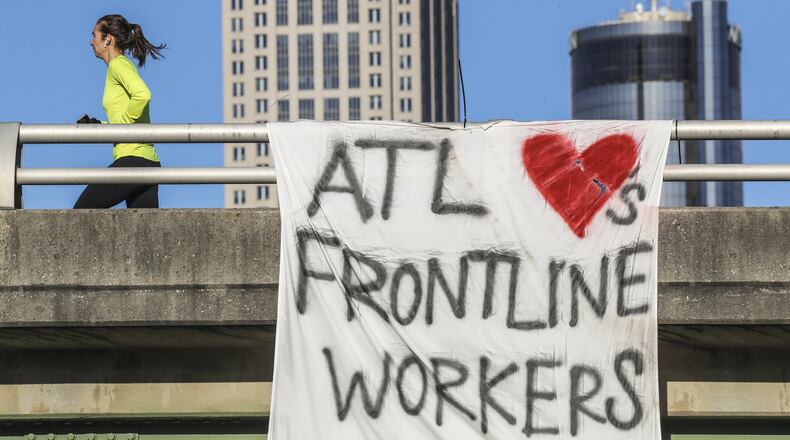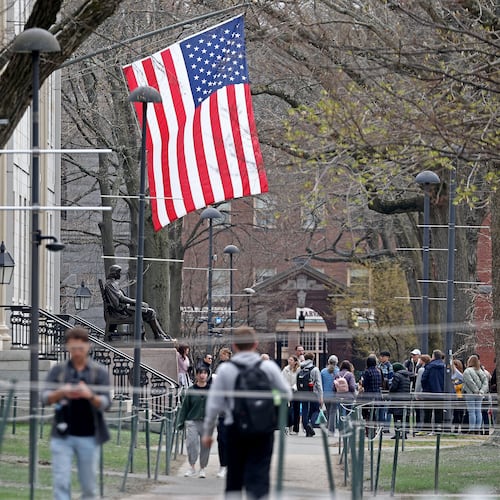These past few weeks have been unprecedented times for all Americans. The fear and unknowns generated from this novel coronavirus have left many feeling scared, isolated, and alone. With new information and guidelines continually being produced by the CDC, WHO and other health organizations, it is difficult to feel stable physically, mentally, and emotionally.
But not all of us have borne this burden equally. In fact, just like many things in America, the impact of this event has fallen hardest on populations that are often afterthoughts in our society: the homeless, the poor, the elderly, the undocumented, asylum seekers, and prisoners.
Business layoffs have resulted in an estimated 3.5 million people losing their access to healthcare and around 20 million scrambling to apply for unemployment. This adds to the estimated 27 million or more who already didn’t have health insurance.
With most states ordering social distancing and imposed self-isolation, that can be nearly impossible for those living in subsidized housing or nursing homes. And for prisoners, truly impossible. When living conditions are already cramped, it is obvious that the ability to self-quarantine is a privilege that not all of us are fortunate enough to practice. The transmission method of this virus is still a hot topic of discussion, but whether it is spread solely through respiratory droplets or perhaps aerosolized, COVID-19 can quickly ravage through communities in such close proximity. And with an incubation period estimated to be a maximum of 14 days, this virus’ ability to spread unknowingly can quickly overwhelm any healthcare system.
Perhaps the most vulnerable are those who are undocumented and asylum-seekers. With no access to government programs like health insurance, unemployment and food stamps, their situation is particularly dire. This already compounds the everyday stress of living as an undocumented person. Sometimes living with a language barrier and a lack of general community support, these populations risk a great deal while oftentimes continuing to work as “essential workers” in a variety of food industries. And a harsh reality is that many of these populations are made up largely by minorities who already have worse health outcomes. With higher rates of medical conditions like diabetes, hypertension, asthma and more, it makes sense why minorities, particularly African Americans, Latinos, and Native Americans are at higher risk. These poor outcomes are certainly multifactorial, but systemic factors like those addressed above undoubtedly contribute to these cultural disparities.
We have already seen one community hurt substantially: As of April 21st, 63% of COVID-19 deaths in Mississippi have been black – the highest of any state. Other states where blacks make up an alarming portion of COVID-19 fatalities include 57% in South Carolina, 56% in Louisiana, 53% in Georgia, 48% in Alabama, 40% in Maryland, 40% in Michigan, 39% in Illinois, 38% in North Carolina, 38% in Missouri, 37% in Arkansas, 35% in Wisconsin, 32% in Tennessee and 28% in New York. It’s also worth noting that Hispanics have accounted for 34% of deaths in New York, and Native Americans have accounted for 18% of deaths in Arizona. All places where these communities have been disproportionately affected. Many states, some heavily affected like New Jersey, have a large portion of unknown ethnic/racial status of fatalities, but the trend of inordinate minority representation is expected to continue.
Where we live also has a clear impact on our direct risks from this virus; although major metropolitan cities like New York have been hit incredibly hard, we have seen rural communities, like here in Albany, Georgia, post some of the highest per-capita COVID-19 mortality rates in the country. With even less access to healthcare than their urban counterparts, rural communities face immense danger when dealing with a pandemic.
Unforgettably, healthcare workers remain at the forefront of this pandemic. Despite inadequate personal protective equipment and in some cases resorting to handmade masks and gowns, healthcare workers continue to provide care — sometimes at the expense of their own health. We continue to see physicians, nurses, and others die of COVID-19. To all of those working during this period, I want to say thank you.
So how do we compare to other places across the globe? There’s a great deal we could have done differently to prepare for this; but is America now doing all that it can? Canada will provide $2,000 a month for the next 4 months for all workers laid-off during this period, along with $300 per child. The U.S.A. is providing many Americans with a single payment of $1,200, along with $500 per child. Italy has halted mortgage payments until further notice. Mortgage payments continue to be made in the U.S. In Portugal, all asylum-seekers and migrants have temporarily been given citizenship status and access to healthcare in an effort to contain the spread of the virus. An almost unthinkable action here in the U.SA.
Disregarding the advice of the CDC and greater medical community, Gov. Brian Kemp has approved the reopening of some non-essential businesses like salons, tattoo shops, bowling alleys, and more as early as Friday, April 24th. Because of this, it is likely we will see another spike in cases and fatalities from the virus. I encourage all of those who are capable to shelter in place at least until April 30th.
As we continue to navigate these unprecedented times, I hope we can find solidarity and compassion for all members of our community. Now more than ever, we must come together to learn from this as we try to create a better America. While this has had a profound impact on all of us, we should continue to keep perspective and keep those less fortunate in mind, as well as those who have already lost people close to them from this virus. Where we live, where we’re from, what we look like, and our financial security plays a major role in our ability to stay safe during this pandemic. Not everyone can easily access healthcare, not everyone can socially distance, not everyone can access government programs, and not everyone can go home to their families after caring for their patients.
Marshall Waller is a 3rd-year medical student at the Medical College of Georgia.
About the Author
Keep Reading
The Latest
Featured



